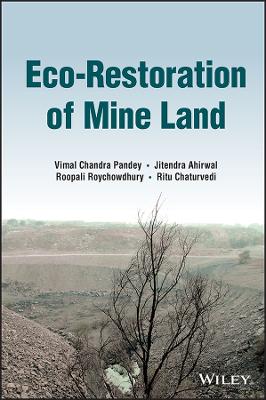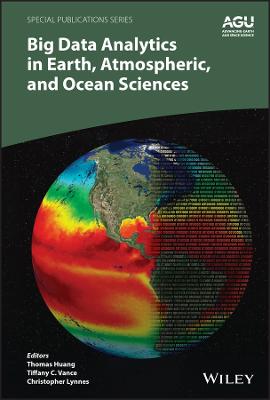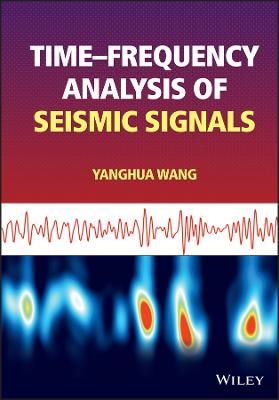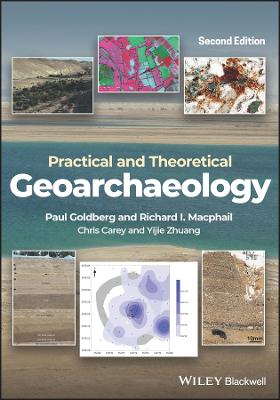Eco-Restoration of Mine Land
 -15%
portes grátis
-15%
portes grátis
Eco-Restoration of Mine Land
Ahirwal, Jitendra; Chaturvedi, Ritu; Pandey, Vimal Chandra; Roychowdhury, Roopali
John Wiley & Sons Inc
12/2022
240
Dura
Inglês
9781119872252
15 a 20 dias
666
Descrição não disponível.
Chapter 1: Mine Land and Its Environmental Impacts
1.1 Introduction
1.2 Environmental impacts of mine land and ecological disruption
1.3 Economic valuation of impacts on the environment
1.4 Environment protection and policy implication
1.5 Management and Reclamation
1.6 Progressive Reclamation
1.7 Conclusion
Chapter 2: Soil Contamination, Risk Assessment and Phytoremediation of Mine Land
2.1 Introduction
2.2 Soil contamination
2.3 Risk assessment
2.4 Phytoremediation of mine land
2.5 Conclusion
Chapter 3: Bio-Geotechnologies in Mine Land Restoration
3.1 Introduction
3.2 Potential Approaches for Mine Land Restoration
3.3 Insights and Lessons Learned for the Practice of Mine Land Restoration
3.4 Conclusion
Chapter 4: Carbon Sequestration Potential of Restored Coal Mine Soils
4.1. Introduction
4.2 Generation and management of mine waste
4.3 Carbon sequestration in reclaimed mine soils
4.4 Carbon fractionation: Importance and challenges in coal mining areas
4.5 Carbon indices
4.6 Mine soil amendments
4.7 Carbon sequestration in revegetated coal mine soils: a chronosequence approach
4.8 Conclusion
Chapter 5: Assessing Mine Restoration Success Using Biological Soil Quality Indicators
5.1 Introduction
5.2 Revegetation of mine lands
5.3 Reclaimed mine soil quality indicators
5.4 Development and use of soil quality indices
5.5 Conclusion
Chapter 6: Ecosystem Services on Restored Mine Land
6.1 Introduction
6.2 Rehabilitated mine land
6.3 Ecosystem services on rehabilitated coal mine land
6.4 Restored mine land and United Nations Sustainable Development Goals
6.5 Important case studies of mine restoration
6.6 Policy restructuring for fusing circular economy and mine land restoration
6.7 Conclusion
1.1 Introduction
1.2 Environmental impacts of mine land and ecological disruption
1.3 Economic valuation of impacts on the environment
1.4 Environment protection and policy implication
1.5 Management and Reclamation
1.6 Progressive Reclamation
1.7 Conclusion
Chapter 2: Soil Contamination, Risk Assessment and Phytoremediation of Mine Land
2.1 Introduction
2.2 Soil contamination
2.3 Risk assessment
2.4 Phytoremediation of mine land
2.5 Conclusion
Chapter 3: Bio-Geotechnologies in Mine Land Restoration
3.1 Introduction
3.2 Potential Approaches for Mine Land Restoration
3.3 Insights and Lessons Learned for the Practice of Mine Land Restoration
3.4 Conclusion
Chapter 4: Carbon Sequestration Potential of Restored Coal Mine Soils
4.1. Introduction
4.2 Generation and management of mine waste
4.3 Carbon sequestration in reclaimed mine soils
4.4 Carbon fractionation: Importance and challenges in coal mining areas
4.5 Carbon indices
4.6 Mine soil amendments
4.7 Carbon sequestration in revegetated coal mine soils: a chronosequence approach
4.8 Conclusion
Chapter 5: Assessing Mine Restoration Success Using Biological Soil Quality Indicators
5.1 Introduction
5.2 Revegetation of mine lands
5.3 Reclaimed mine soil quality indicators
5.4 Development and use of soil quality indices
5.5 Conclusion
Chapter 6: Ecosystem Services on Restored Mine Land
6.1 Introduction
6.2 Rehabilitated mine land
6.3 Ecosystem services on rehabilitated coal mine land
6.4 Restored mine land and United Nations Sustainable Development Goals
6.5 Important case studies of mine restoration
6.6 Policy restructuring for fusing circular economy and mine land restoration
6.7 Conclusion
Este título pertence ao(s) assunto(s) indicados(s). Para ver outros títulos clique no assunto desejado.
Phytoremediation; soil contamination; soil degradation; mining pollution; mining land phytomanagement; climate change; re-vegetation; disused mine land; mining dumps; environmental pollution; environmental action; sustainable industry
Chapter 1: Mine Land and Its Environmental Impacts
1.1 Introduction
1.2 Environmental impacts of mine land and ecological disruption
1.3 Economic valuation of impacts on the environment
1.4 Environment protection and policy implication
1.5 Management and Reclamation
1.6 Progressive Reclamation
1.7 Conclusion
Chapter 2: Soil Contamination, Risk Assessment and Phytoremediation of Mine Land
2.1 Introduction
2.2 Soil contamination
2.3 Risk assessment
2.4 Phytoremediation of mine land
2.5 Conclusion
Chapter 3: Bio-Geotechnologies in Mine Land Restoration
3.1 Introduction
3.2 Potential Approaches for Mine Land Restoration
3.3 Insights and Lessons Learned for the Practice of Mine Land Restoration
3.4 Conclusion
Chapter 4: Carbon Sequestration Potential of Restored Coal Mine Soils
4.1. Introduction
4.2 Generation and management of mine waste
4.3 Carbon sequestration in reclaimed mine soils
4.4 Carbon fractionation: Importance and challenges in coal mining areas
4.5 Carbon indices
4.6 Mine soil amendments
4.7 Carbon sequestration in revegetated coal mine soils: a chronosequence approach
4.8 Conclusion
Chapter 5: Assessing Mine Restoration Success Using Biological Soil Quality Indicators
5.1 Introduction
5.2 Revegetation of mine lands
5.3 Reclaimed mine soil quality indicators
5.4 Development and use of soil quality indices
5.5 Conclusion
Chapter 6: Ecosystem Services on Restored Mine Land
6.1 Introduction
6.2 Rehabilitated mine land
6.3 Ecosystem services on rehabilitated coal mine land
6.4 Restored mine land and United Nations Sustainable Development Goals
6.5 Important case studies of mine restoration
6.6 Policy restructuring for fusing circular economy and mine land restoration
6.7 Conclusion
1.1 Introduction
1.2 Environmental impacts of mine land and ecological disruption
1.3 Economic valuation of impacts on the environment
1.4 Environment protection and policy implication
1.5 Management and Reclamation
1.6 Progressive Reclamation
1.7 Conclusion
Chapter 2: Soil Contamination, Risk Assessment and Phytoremediation of Mine Land
2.1 Introduction
2.2 Soil contamination
2.3 Risk assessment
2.4 Phytoremediation of mine land
2.5 Conclusion
Chapter 3: Bio-Geotechnologies in Mine Land Restoration
3.1 Introduction
3.2 Potential Approaches for Mine Land Restoration
3.3 Insights and Lessons Learned for the Practice of Mine Land Restoration
3.4 Conclusion
Chapter 4: Carbon Sequestration Potential of Restored Coal Mine Soils
4.1. Introduction
4.2 Generation and management of mine waste
4.3 Carbon sequestration in reclaimed mine soils
4.4 Carbon fractionation: Importance and challenges in coal mining areas
4.5 Carbon indices
4.6 Mine soil amendments
4.7 Carbon sequestration in revegetated coal mine soils: a chronosequence approach
4.8 Conclusion
Chapter 5: Assessing Mine Restoration Success Using Biological Soil Quality Indicators
5.1 Introduction
5.2 Revegetation of mine lands
5.3 Reclaimed mine soil quality indicators
5.4 Development and use of soil quality indices
5.5 Conclusion
Chapter 6: Ecosystem Services on Restored Mine Land
6.1 Introduction
6.2 Rehabilitated mine land
6.3 Ecosystem services on rehabilitated coal mine land
6.4 Restored mine land and United Nations Sustainable Development Goals
6.5 Important case studies of mine restoration
6.6 Policy restructuring for fusing circular economy and mine land restoration
6.7 Conclusion
Este título pertence ao(s) assunto(s) indicados(s). Para ver outros títulos clique no assunto desejado.







